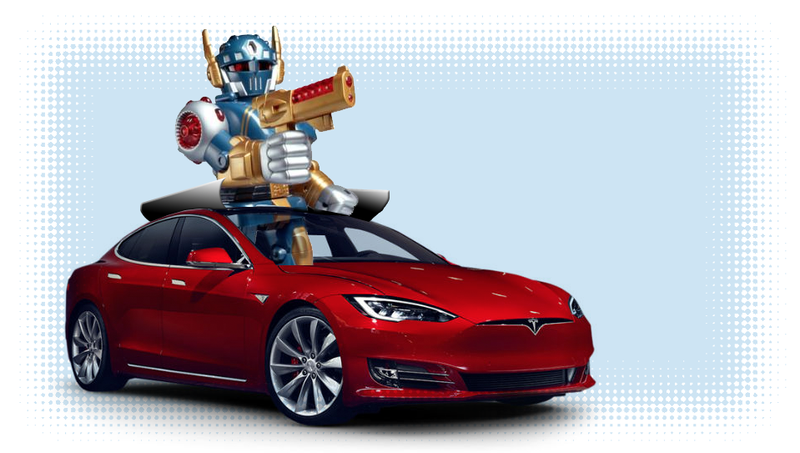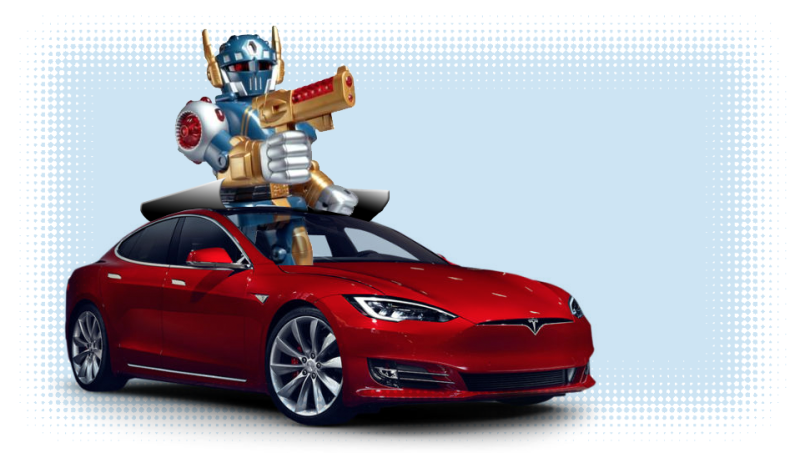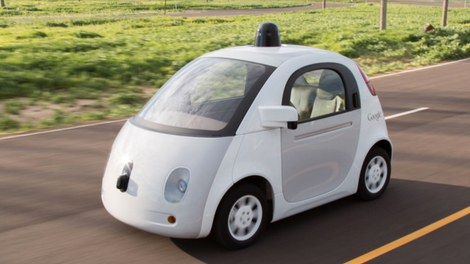
Ah, what a pleasant scene: It’s a sunny day—maybe 65, 70 degrees out—and you’re getting luxuriously chauffeured about town in your fancy robot car. All the sudden, a band of armed hooligans surrounds you! Oh no, the car doesn’t know what to do—it doesn’t want to hit the people in front of it—so it just sits there, while the masked bandits demand all of your stuff.
That’s a potential scenario laid out in a study commissioned by the British government on autonomous vehicles. And while there’s much to dissect from the study conducted by the University College London’s Transport Institute—The Daily Mail has a sharp rundown of what’s contained therein—one particular section stands out.
Advertisement
Advertisement
It has 12 “scenes” that describe a possible future where the rollout of autonomous vehicles has “led to unexpected, and in some cases, controversial events.” And “controversial,” they mean some crazy Clockwork Orange shit.
Check it. (Emphasis ours)
SCENE G: AUTOMATED MUGGING
Local Transport Today, Issue 13227, February 4-17 2026
Transport Select Committee announces inquiry on personal security and autonomous vehicles
The Transport Select Committee yesterday announced the launch of a new inquiry on personal security and autonomous vehicles, reflecting serious concerns raised by a wide range of motoring and consumer group organisations (see LTT passim). These relate to the vulnerability of occupants of fully autonomous vehicles following a series of high profile vehicle-jackings and personal muggings in wealthy, low-density areas at night – throwing into question the whole idea of ‘hands-free’ driving.
AVs travelling down residential streets have been suddenly surrounded by groups of young men, wielding bars and bats. The vehicles come to a halt, to avoid causing injury, and then remain immobile while windows are smashed and occupants are threatened. Having suffered the fear and humiliation of the attack, the occupants are further angered by the vehicle’s monitoring systems identifying damage and thereby refusing to restart so they can resume their journey.
The Mail on Sunday has added its weight to the campaign for action. As it reported last month, Sue Brown was returning home from a night out with friends and while her vehicle was passing a local park something was thrown in front of her car, which made an emergency stop. Immediately she was surrounded by four youths; one smashed a side window and demanded her necklace, watch and purse. “What could I do?” she recalls. “If I’d had my old manual car I’d have driven at them and they would have soon scattered! We bought this car as we were told it was a lot safer – my husband had an accident a few years ago and injured a cyclist – but this is just exchanging one type of danger for another. We traded it in the next day for a ‘proper’ car.”
I’m not sure how many residents will be reading Local Transport Today in 2026, but it still poses an interesting scenario. The first image, obviously a frightening situation for our hypothetical passengers, quickly pivots to an unfortunately comedic twist. Not only are they bummed about getting mugged, but then they turn their anger toward the vehicle itself?
Sponsored
Sue, too, seems like the archetype person of the future who Just Doesn’t Trust Those Robot Cars. “Hey, I thought you said this was going to be safer and save more lives? What the heck?” And, alas, we’ve encountered yet another example of a roadblock toward robot car utopia.
The study describes this as a “plausible” scenario, and really, it does make sense. For AD cars to ultimately be successful—at least in the eyes of automakers—they have to be designed in a way that doesn’t require human intervention whatsoever. They have to be trained to stop if a human jumps out in front of it.
Advertisement
So how’s it going to differentiate a human from someone trying to rob the vehicle? Presence of a weapon? Even if it’s designed to recognize someone’s trying to steal some shit, what’s the response? A loud alarm? Would that work?
We’re nowhere near that level of sophistication at this point, but the study hits on a point that’s probably paramount to the future success of AD cars. If a human isn’t present or alert at the wheel, how does the cars defend itself?
















